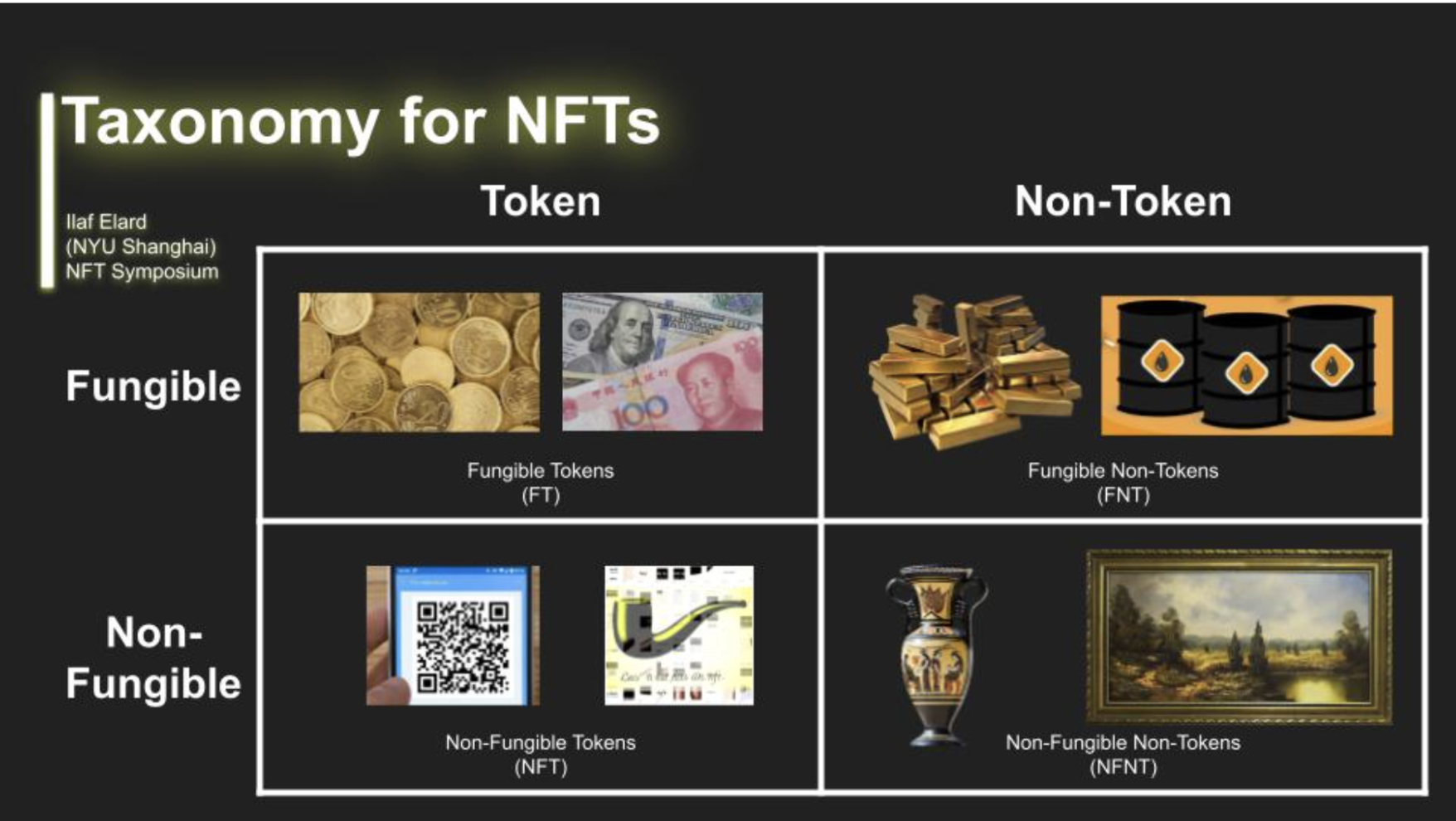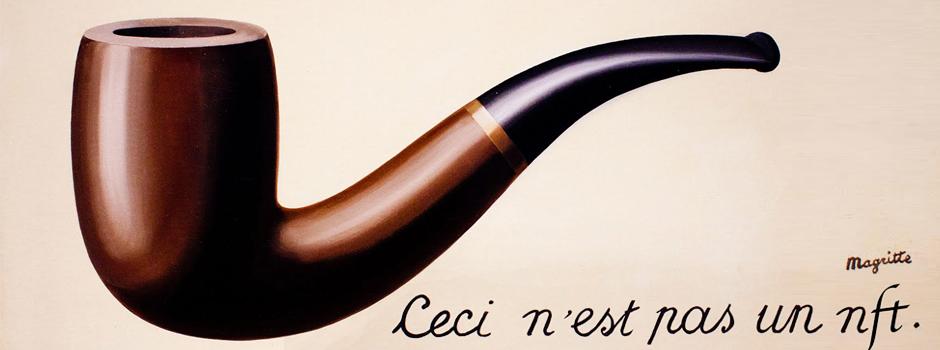Non-Fungible Tokens or “NFTs” are a trendy topic these days, seeping into commerce, the internet, the arts, and the general zeitgest. But what, exactly, are they? On May 6, a group of NYU Shanghai professors launched “This is not an NFT,'' a new webinar series to define and examine NFTs from a cross-disciplinary perspective.
Associate Professor of Interactive Media and Business Alex Ruthmann kicked off the symposium by answering the central question, “What is an NFT.” “Essentially, an NFT is a pointer to or container for something virtual of perceived value registered on a blockchain. It can be literally ‘anything’ described, or pointed to even ‘nothing.’ Typically, an NFT is a digital file of an artwork, video, image, audio recording, etc,” he said.

Left: Prof. Alex Ruthmann presented a metaverse which includes his virtual self and the 100 NFTs minted by NYU Shanghai on the occasion of this symposium; Right: User generated groove pizza NFTs for kids and fans by Prof. Alex Ruthmann’s MusEDLab
Ruthmann walked the audience through the concept and mechanisms behind the creation and distribution of NFTs, shared examples of the first generation of NFTs, and presented emerging visions for the next generation of NFTs and China’s Digital Collectible Certificates.
He demonstrated how his MusEDLab and research team are exploring the application of NFTs and blockchain for music and education by extending an original music app called “Groove Pizza.” “With NFTs, we're really starting to see innovation in the music and concespace around virtual experiences are around concerts, here NFTs are used to package digital merchandise or VIP experiences.”

Prof. Olivier Marin presenting ingredients of a blockchain
In his talk, “In Blockchains we trust (...n’t?),” Professor of Practice in Computer Science Olivier Marin gave audiences a crash course in the underlying blockchain technology, and its possibilities and limitations. He examined three key concepts: cryptographic hashing, peer-to-peer networks, and distributed consensus. “None of these three components are completely reliable. Actually, they can never be. Failures are inevitable,” Marin said, “But there are workarounds. Paradoxically, we can find safety in numbers. There are millions of users, and we can assume most of them are honest. To reach a correct consensus, all you need is to find a majority of trustworthy participants. Nonetheless, never believe someone who tells you that blockchains are 100% safe and reliable. We have theoretical proof that this is untrue, and even worse: unachievable! ”
 Prof. Ilaf Elard defining a token taxonomy from an economic and computer science perspective
Prof. Ilaf Elard defining a token taxonomy from an economic and computer science perspective
Assistant Professor of Practice in Economics Ilaf Elard defined the key terms of what tokens, fungibility and non-fungibility in the “Defudging NFTs” lecture. He illustrated the differences between non-fungible non-tokens, fungible non-tokens, fungible tokens, and non-fungible tokens (NFTs), and further explained what the possibilities and limitations of blockchains mean for applications in business, finance and art.
“The term token comes from tācen which derives from zeihan, or Zeichen in modern German, and means sign or symbol. First, a token is a ‘sign’ that indicates or represents the presence of something else. Second, a token is a ‘symbol’ representing a right, permission, or authority,” said Elard. “What all tokens have in common is that they have little to no intrinsic value. A token’s value, instead, comes from its value in exchange: the email password token in exchange for access to your inbox, vouchers in exchange for food or gifts, or cash money in exchange for payment of goods. Fungibility means that two things of the same class or category of items are interchangeable at the same value.”

Prof. Alice Wang exploring the works of French artist Marcel Duchamp and American artist Sturtevant
Do NFTs have the potential to become the new upstart of art in the 21st century? In her talk “Peering into the understructure of Art," Clinical Assistant Professor of Arts Alice Wang attempted to answer this question by exploring the works of French artist Marcel Duchamp and American artist Sturtevant and established the groundwork to consider the conceptual possibilities of NFT’s to examine the understructure of ‘art.’
“Non-fungible tokens, or NFTs, have become a new form of art that proves ownership and circulates in the digital realm, establishing a new art market through cryptocurrency,” said Wang, “For me, as an artist, I'm interested in making work that engages with the medium, or is medium specific. When understanding the circulation and meaning of a work of art, I think in terms of NFTs, there is a high barrier to entry because of all the technical knowledge.”


